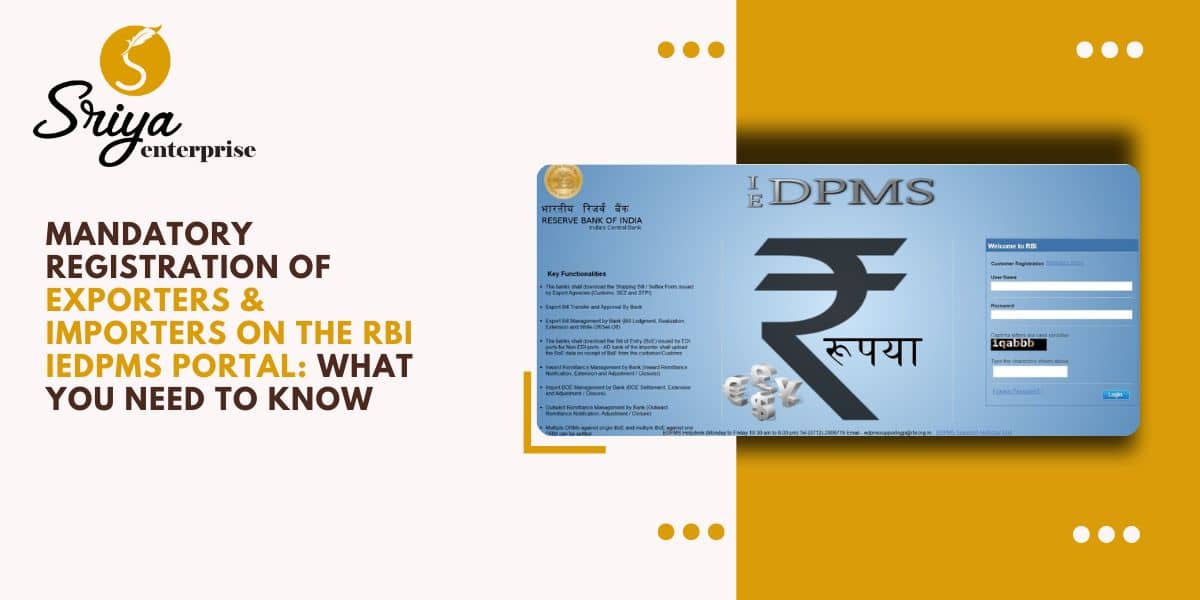India’s international trade landscape continues to evolve, with digital compliance and transparency at the forefront…

In today’s interconnected global economy, international trade forms the backbone of economic growth and prosperity for many businesses. Whether you’re a small enterprise or a multinational corporation like Sriya Enterprise, understanding trade finance is crucial for navigating the complexities of international commerce effectively. This blog explores the benefits, types, and workings of international trade finance to shed light on its importance and application.
Benefits of International Trade Finance
Risk Mitigation: Trade finance instruments such as letters of credit and trade credit insurance help mitigate the risks associated with international transactions, including political instability, currency fluctuations, and non-payment by foreign buyers.
Access to Working Capital: Trade finance provides businesses with access to working capital, allowing them to finance their operations, fulfill orders, and manage cash flow more effectively.
Facilitates Growth: By providing financing options tailored to the trade cycle, international trade finance enables businesses to expand into new markets, increase sales, and explore global opportunities.
Competitive Advantage: Efficient trade finance solutions can give businesses a competitive edge by improving liquidity management, reducing financing costs, and accelerating transaction processing times.
Types of International Trade Finance
Letters of Credit (LC): LCs are financial instruments issued by banks that guarantee payment to the exporter upon submission of compliant shipping documents. They assure both parties of the transaction.
Trade Credit Insurance: This type of insurance protects businesses against the risk of non-payment by foreign buyers due to insolvency or political factors, ensuring they receive payment for delivered goods or services.
Export Credit Agency (ECA) Financing: ECAs provide financial support to exporters through loans, guarantees, and insurance programs, promoting exports by mitigating commercial and political risks.
Factoring and Invoice Discounting: These financing techniques involve selling accounts receivable at a discount to a financial institution (factor), providing immediate cash flow while transferring credit risk.
How International Trade Finance Operates
Initiation and Agreement: Businesses negotiate trade terms with international counterparts, including pricing, delivery terms, and payment methods, establishing a framework for the transaction.
Engaging Trade Finance: Utilizing trade finance services from banks mitigates risks and ensures payment security, aligning with agreed trade terms and conditions.
Documentary Procedures: Essential documents such as invoices and certificates validate compliance with agreed trade terms, ensuring transaction integrity and facilitating smooth processing.
Execution and Settlement: Upon shipment, businesses present required documents to their bank, which facilitates payment through letters of credit or oversees payment collection through documentary collections, ensuring transaction completion.
Conclusion
International trade finance is essential for businesses looking to expand globally, manage risks effectively, and optimize financial operations. By leveraging various trade finance instruments and understanding their operational mechanisms, businesses can confidently engage in international transactions, foster growth, and maintain competitiveness in the global marketplace.
Whether you are exploring new international markets or seeking to streamline existing global operations, understanding and utilizing international trade finance can provide significant advantages. For further insights and guidance tailored to your business needs, consult with financial experts specializing in international trade finance.



